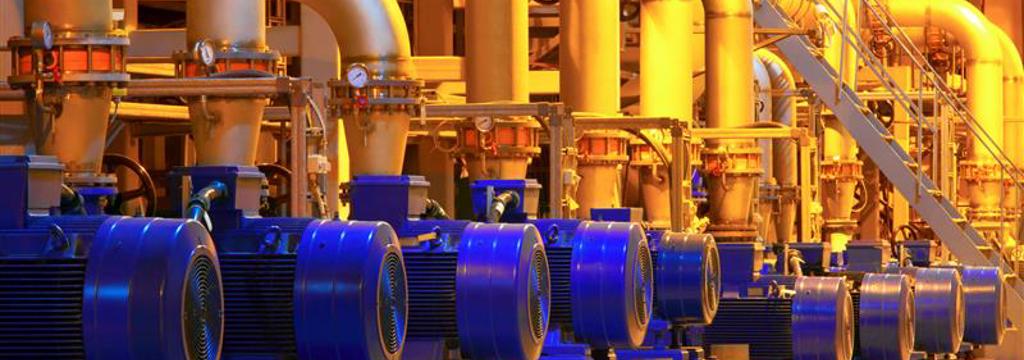The Preparation and Isolation - Control of Work Part 2

High Risk Isolations
Some isolation activities are essentially by their nature, extremely high risk. These generally fall into two major areas:
Isolation of equipment performing a ‘safety’ or control function. For example, safety interlock overrides and the removal of relief valves etc. Work on this type of equipment render the process at risk whilst the equipment is out of commission. (See removal of critical equipment, below)
· ‘Emergency’ isolations where positive isolations cannot be affected or guaranteed. For example, the deliberate use of inert atmospheres to negate the build-up of a flammable atmosphere. Or the use of expandable barriers in lines providing a physical block to process materials. Since the materials considered for the inerting and expansion of the physical block are likely to be asphyxiants, great care must be taken in their use
In these instances, the isolation itself should be subject to a formal risk assessment and control measures and back-up devices and formalised contingency plans developed. In addition, the duration of the isolation must be kept to a minimum and its integrity monitored over the time it is in place. For these reasons, RAP has a separate module, which accomplishes these functions – the Override System.
Removal of Critical Equipment
Certain items of equipment are key to the safe operation of the plant. Examples of these will include Safety Relief Valves, certain instruments and perhaps fire-mains. When these are set to be isolated for maintenance work, the plant is at risk for the entire duration the equipment is out of commission.
This is often countered with this equipment being spared i.e., alternative equipment is available. When this is the case and when the original equipment is being worked on, there is still a threat to safe operation if the alternative fails. For this reason, plants usually operate a more formal isolation procedure for this type of equipment.
These are sometimes called, override lists, valve registers, interlock lists. Whatever the name, they all have certain elements in common. The first is the recognition that the piece of equipment is safety critical.
Secondly, when the equipment is to be removed, a careful note is made. The action of removal is risk assessed, alternative controls are specified and (usually) higher level signatures are required. RAP does all of these with the bonus that it can integrate with all its other systems.
Example of RAP integration with other systems
It is desired to remove a level measurement, indication and control loop for maintenance. This loop controls the level of a flammable product in a tank switching any potential overflow to a subsidiary tank.
As soon as the work order comes into the RAP system, a flag is raised. This states that this is a safety critical piece of equipment and additional actions will need to be taken. RAP’s permit system then initiates the job in its override system. This is risk assessed and completed.
Only then can the permit required for its removal be issued. In addition, one of the mitigating actions is for the Operator to include measurement from a sight-glass on the tank during their daily rounds.
This action is communicated to RAP’s Operating Rounds system and added to the list for visual inspection. When the permit is complete, the override is signed off and the action of viewing the sight-glass removed from the Operator’s rounds.
Preparing the Work Area
Although ‘preparation of the work area’ is generally labelled as a ‘non-process’ step, this does not mean that Process or Manufacturing personnel are not involved in it. On the contrary, such personnel can have a major influence on area preparation and often on work execution. This is particularly true when considering such elements as the cleanliness of the area, positioning of fire extinguishers or safety showers. Also, total Productive Maintenance related activities.
Some elements of work area preparation are the subject of the Permit to Work process themselves. Take for example, working at height where a scaffold may need to be erected to provide a platform upon which people can work.
The same is true for excavation activities. The preparation in this case will involve digging down to the equipment to be worked on which will almost certainly involve a permit to work. The essential considerations for these activities are to understand the effect the area can have on the individual(s) and the effect they can have on it. This should be considered, both at the start of the work and as the work progresses. Examples of how the work area can impact upon the job will include:
· the floor conditions (wet, slippery, uneven etc.) - slips trips and falls are the most common type of accident even in the high hazard industries,
· the presence of flammable materials (these should either be removed if possible or covered over if not),
· the ambient conditions (individuals may be exposed to high traffic load, noise, hot surfaces etc.).
Basic examples of how the job will affect the area may include:
- the possible release of materials which cause slip hazards. In this case the pre-emptive application of absorbent material such as or like sawdust might be beneficial before working. Or a better solution particular in extreme or extended circumstances, is to request containment such as a bund wall,
- blocking a thoroughfare and providing an access/egress hazard, requires the placing of notices for passers-by and potentially provision of an alternative route,
- when the noise from the job is likely to be a nuisance to others. Consider the erection of a screen, baffles, or the re-scheduling of the adjacent activities can be pre-empted to minimise the presence of others.
In addition to preparing for the initial conditions, it is also important to develop an understanding of how these might change during the job. The weather is an obvious consideration here and changes can cause a complete re-evaluation of how the job is carried out and sometimes even stop it if circumstances are extreme enough.
Working on a roof, chimney or a reservoir is not recommended during strong winds and lightening. Also with excavations, the worksite can change dramatically over the course of a job. We have talked earlier about how maintaining awareness of potential risks during the work itself (RAP Insight #1 ‘Always have an eye for risk’) is extremely important.
Isolations are no different. Many things can happen to reduce the integrity of the isolation state. Valves can pass, fumes can build up as ambient temperatures rise (as we have seen), other work can impact. It is vital therefore to monitor these elements at frequent intervals.
This concludes the section on Preparation and Isolation of Equipment. It is our experience that over the 25 years of looking very closely at isolation systems, standards are rising.
Lock-out tag-out is now become the norm as isolation procedures (as opposed to lists of isolation points) are becoming more prevalent. Also. The preparation of the equipment is beginning to be documented in a typical step-by-step manner. With sign off at each stage – often as part of one procedure. It’s just as well, RAP does all of this – and more.
RAP - we’ve got it all covered
Related Articles
 The Preparation and Isolation - Control of Work, Part 1
The Preparation and Isolation - Control of Work, Part 1
Adequate risk assessment preparation for maintenance work is probably the single most effective way of reducing risks present in both the equipment an...
 What is Digital Permit to Work?
What is Digital Permit to Work?
Permit to Work has historically always been paper-based systems with multiple forms for each task that needs to be performed. However, in the age of d...
 Digitisation of your HSE System
Digitisation of your HSE System
Here are some key observations Involve the people By this, I don’t just mean in specification of what you want although of course, this is a must (mor...